Ever since we did the West Coast Trail in 2004, my husband Greg and I had wanted to hike the Nootka Trail as it was rumoured to be like the West Coast Trail “used to be”: no permits, no boardwalks, no crowds.
If you aren’t familiar, the Nootka trail is more of a route and runs roughly 40km along the west coast of Nootka Island, which is off the west coast of Vancouver Island. The whole hike is on Crown land and is not park of any park or reserve and is therefore not maintained. All of the research I had done on the trail beforehand suggested that it would involve lots of beautiful sand beaches, some rough stretches of trail over headlands, lots of wildlife sightings, and some great campsites.
Having spent seven days and six nights on the trail in September of 2011 with Greg and our friends D and B, I have to say that it was all that it promised to be. Here is the story of that trip.
This is a sensitive wilderness area. Learn how to Leave No Trace to keep the wilderness wild. Make sure you are prepared by bringing the 10 Essentials. Get ready for adventure with this checklist of things to do before every hike.
Nootka Trail Day 1: Distance: 1.5km; Time: 40 minutes
To get to Nootka Island you need to charter a float plane, which was a new experience for us. We booked a noon flight out of Gold River with Air Nootka, but managed to show up an hour ahead of schedule. The Air Nootka staff were very flexible and said since we were there early we could leave early – so much better than flying commercial!
Having never flown in a float plane I was apprehensive, but our pilot’s take off was so smooth that we were in the air before we even realized it. Part of the allure of flying in to the Nootka Trail rather than taking a water taxi is getting the aerial tour of the trail from the floatplane and it did not disappoint. Our pilot was a willing tour guide and answered all of our questions as we chatted away through the headsets. We flew down the length of the inlet away from Gold River towards Nootka sound. Soon we were looking down on a picturesque cove with a lighthouse – we were high above the village of Yuquot already, the end point of our trip. We also flew over other major landmarks on the trail, such as Calvin Falls.
All too quickly we were making a banked turn to come in for a landing in Starfish Lagoon (also known as Louie Lagoon). The tide was nearly high and there was not much beach to organize ourselves on. After we unloaded we gave the Beaver a push away from shore and the plane quickly taxied down the lagoon leaving us alone in the wilderness. It was a wet exit from the plane so after exchanging our sandals for hiking boots, we set off down the trail into the forest.
The trail was actually quite well marked with square orange markers and some occasional flagging tape. Despite that, it had a lot of blowdown, roots and rocks making it slow going, especially with our overloaded packs! The trail from the Lagoon to Third Beach is just over 1km long, but it still took us about 40 minutes to hike. We encountered our first old growth trees along this section – majestic! Eventually we emerged on the the beautiful white sand of Third Beach.
We found a great campsite complete with a fire ring, cooking area and fishing net hammocks. There was also some fun “art” made of beach debris. The creek had been dammed into a lagoon in front of the campsite making an excellent fresh water infinity pool with a fabulous view. We arrived at camp around 1pm, leaving plenty of time for swimming and lazing around on the beach on a sunny day. We cooked up an excellent dinner (and thereby lessened our pack weight considerably) then explored the nearby tombolo and rock formations. We finished off the evening with a campfire and a great sunset.
Nootka Trail Day 2: Distance: 11.5km; Time: 9 hours
We awoke on our second day to less than perfect weather: grey skies and mist. The start of this day’s stretch of trail was back in the forest up a steep slope. Once at the top we had several kms of slow going forest trail to contend with but it least it was well marked and easy to follow. However, it was hard to take more than two steps in a row without climbing over, under or around something.
After a few kms we were back out on the beach but since the tides were against us, we were forced up onto the high tide line in the pea gravel next to the drift wood and the drifts of sea weed. I have never seen so much sea weed in my life! B had a cold and that combined with our heavy packs made for some slow travel times.
By about 4pm we were rounding a corner and crossing Skuna Creek. On the other side of the creek we were welcomed to a big campfire by four surfers from Seattle. They had been flown in on Air Nootka a few days earlier. The surfers warned us that we would not be able to get around Skuna Bay until the tide receded so we spent a pleasant hour chatting around their campfire before departing. As we came around the end of Skuna Bay towards Calvin Beach the weather started to change for the better. We spotted a mother eagle guarding her nest of chicks and soon were plodding across the sand towards Calvin Falls.
We crossed the Calvin Creek and found a great campsite up against the drift wood. Since we were late getting in to camp we quickly cooked dinner and made a campfire. Just after the sun set and the moon was providing a slight glow in the twilight the rest of the group headed down to the creek to do dishes. Thirty seconds later they came back to the campfire and explained that they couldn’t do the dishes as we had company. We looked down towards the creek where it was flowing into the ocean at low tide and saw wolves. There were at least 25 including pups. A few of the larger wolves headed towards our campsite which made us a bit nervous so we did a bit of yelling and throwing rocks and they backed off. Most of the pack spent about 10 minutes or so nosing around the mouth of the creek before moving on. About six or so pups, most of which were pups or juveniles, spent about 30 minutes playing in the creek. It was amazing to watch them wrestling and listen to them yip and howl. The light was so poor that by the end we could barely see them. The low light also meant that we couldn’t get any photos so you’ll just have to take my word for it. We stayed up a bit later around the campfire, but soon went to bed tired after our long day.
Nootka Trail Day 3: Distance: Nil; Time: Nil
We had scheduled a rest day at Calvin Falls to fully enjoy the area. We woke up to beautiful sunny skies with no clouds: a perfect beach day. We expected a lazy day around camp, but lots of exciting things still happened.
Soon after we got up a lone wolf strolled through camp travelling north, the opposite direction that the wolf pack had travelled the night before. He showed no interest in us and trotted quickly along the beach on his merry way.
A hour later, just as we were finishing breakfast, a small plane flew overhead. However, unlike the floatplanes we had seen previously this one had wheels. The plane flew low over us, then circled around and landed on the beach. The plane contained two surfers who had flown out from the Vancouver area for the day. They were in such a hurry to get into the waves that they barely had time to chat. Later that afternoon just before they ran out of beach as the tide came up, they ran back into the plane and made a hurried departure.
The rest of the afternoon was spent swimming in and climbing the waterfall, beachcombing, exploring the surf shack, marvelling at all the wolf tracks and napping. We shared our evening campfire with the only two other hikers we saw on the trail, A and G, who hoped the wolves would return as they hadn’t seen them. However, the evening was uneventful and we soon went to bed.
Nootka Trail Day 4: Distance: 12.5km; Time: 4.5 hours
We had beautiful weather again on our fourth day as we walked down the sand beach away from Calvin Falls. Soon the sand ran out and we were hiking over basketball sized cobbles as we worked our way towards Bajo Point. The surfers at Skuna Bay had described this section as “cannon balls covered in snot” and we decided that was a fairly apt way to describe it.
Soon the tide went out far enough that we were able to walk on the lovely sandstone shelf. There was lots of life on the shelf, from sea anenomes to starfish, mussels, many kinds of snails and tons of seaweed. The guidebook mentioned it was a great area to see whales and otters, but sadly none were spotted.
As we rounded Bajo Point we had an excellent view of the off shore reef and sea stack which was exposed with the tides. We explored the First Nations reserve near the point which is a long abandoned village site. We managed to find the long mounds that mark the location of the former long houses, but there is little else to show that this was once a seasonal village and home to many families.
Just after passing the point we spied our first black bear digging in the pebbles ahead. He was too far away to take a good photo unfortunately. The wind was blowing our scent towards him at after standing up to get a good sniff of some smelly hikers he wisely retreated into the forest.
After some tedious tromping along pea gravel beaches, we reached the campsite at Beano Creek. Since we arrived in the afternoon, we had time to do some of our favourite activity: napping in the sun. Beano Creek was dammed by a pebble spit at lower tides and we spent several hours watching the waves crash over the spit and into the lagoon. One of the waves even spat out three river otters who nonchalantly sauntered over the spit, then dove into the lagoon and headed up stream.
Nootka Trail Day 5: Distance: 7km; Time: nearly 11 hours
We definitely bit off more than we were expecting on this day as we had planned to hike only seven kilometres to a cove just past Maquinna Point. Well, we should have figured that our slow group would take a lot of time to hike those short seven kilometres since it involved lots of the tedious forest trail and scrambles in and out of pocket coves. Regardless of the eons we spent on the trail, there was still something beautiful to see around nearly every corner.
We started off with a trudge down the pea gravel of Beano Beach before heading inland on a trail section that was very rough, even by Nootka Trail standards. Eventually we popped out in the first of a long series of pocket coves. At each one we would consult our guidebook to see if camping was recommended there, but each one either lacked good water or looked unappealing so we pressed on with our original goal of camping past the point. We ran into several spectacular stands of old growth on this section as well.
As we neared Maquinna Point the trail took a few detours onto exposed headlands with great views and some scrambling over rocks. The side trail to Maquinna Point was a nice chance to drop our packs and hike for a few minutes unburdened. Of course the views weren’t bad either.
After we shouldered our packs once again at Maquinna Point we figured we only had a kilometer or so to go before reaching camp. It was a long slow one however so we decided to forgo a trip to the sea caves as it was high tide and getting late. We finally arrived at a cove with our first view of Yuquot that had a small tea coloured stream flowing into it.
We set up camp quickly and cooked up some dinner. Unfortunately I bumped the driftwood that had the stove sitting on it, spilling a pot of boiling hot meat sauce onto Greg’s feet and legs. He quickly immersed them in the ocean, but about half of dinner was now on the sand. We managed to salvage what was left, but had to shovel meat tainted sand into the ocean and hang Greg’s shoes and pants in the bear hang that night.
Nootka Trail Day 6: Distance: 3km; Time: 1.5 hours
We left camp late on the sixth day as we knew it was only about 700m to the Tidal lagoon crossing and we wanted to be there at low tide. However, when we arrived at the lagoon we found that it was only knee deep and getting even shallower so we had worried for nothing. The hike to the lagoon was relatively easy, but did involve some bits of forest trail and some scrambling around headlands While we were changing footwear at the lagoon we spotted a bear further upstream, but again, he was too far away to get a good photo. We had a leisurely lunch at the lagoon then headed towards Yuquot, which we could always see in the distance.
Once past the tidal lagoon we had some more plodding along pea gravel beaches. Eventually we decided to take an inland trail maintained by the First Nation since it was was easy walking and shaded, both of which were appreciated by this point. The trail passed by the cabins for rent, the swimming beach at Jewitt Lake and the graveyard before arriving at the church/musuem in the village Yuquot proper.
We checked in at the band office in the back of the church and paid our trail fees then went off to explore the lighthouse area. We camped in the meadow in “downtown” Yuquot, which is included with your trail fees. They even had picnic tables, fire rings and composting outhouses.
After setting up camp we checked out the small museum inside the church. The history of the place is fascinating and I was surprised it was not better known. For the uninformed (as I was) Yuquot is the site of Captain Cook’s first land fall in BC, making this the site of the first European land contact in BC. The Spanish had been in the area four years earlier, but only traded from their ships. The museum is an interesting mix of historical information and aboriginal carvings and totems all inside a former Catholic church.
That evening, one of the locals offered us some fresh caught salmon and some extra ribs he had barbecued. We had already eaten our last dehydrated backpacking dinners but we couldn’t refuse. So full! And a great way to spend our last night on the Nootka Trail.
Nootka Trail Day 7: Distance: Nil; Time: Nil
We slept in as the MV Uchuck III wasn’t scheduled to arrive until the afternoon. We started our day by checking out a totem pole. The First Nations people believe that once a totem pole falls it should be left where it fell, so the one in Yuquot is in a pile of blackberry bushes. Next we went for a quick swim in Jewitt Lake and then we amused ourselves by picking and eating tons of delicious blackberries.
Since we were taking the Uchuck on a Tuesday she was on a freight run, not a tourist run so she was a bit late getting into Yuquot and then made a couple more stops on the way back to Gold River.
By the time we landed we didn’t have much time to drive to Duke Point to make the 10:45pm ferry, the last one off Vancouver Island that night. After narrowly avoiding a speeding ticket (we got a warning!) we managed to make it to Duke Point on time and boarded the ferry with about 25 truckers and no one else. At least there was no line up in the cafeteria as we were starving. We arrived home laden with stinky gear close to 2am, showered and fell right to sleep. Getting up the next morning to go to work as usual was so surreal after a week in the sunshine on the edge of the world.
If You Go:
More information about the Nootka Trail can be found in Philip Stone’s book Coastal Hikes: A Guide to West Coast Hiking in British Columbia and Washington State and Tim Leadem’s Hiking the West Coast of Vancouver Island. I took photocopies of the relevant pages from both on my trip.
You’ll need to organize transportation to and from the trail by floatplane, water taxi or scheduled boat service. We travelled in on a charter flight with Air Nootka and out on the scheduled service with the MV Uchuck III.
The hike is on Crown land and Indian reserve land and the entire trail travels through the traditional territory of the Mowachaht/Muchalaht First Nation, based in Gold River. The band maintains the last kilometer or so of the trail and provides a great campsite in Yuquot. For this they charge a trail access fee of $50 per person, payable in Yuquot.
Except for the campsites at Yuquot there are no designated campsites on the trail, no outhouses, no bear caches and no real trail maintenance. There are several tidal obstacles on the trail so you will also need to be comfortable reading a tide table and planning your days around the tides. We carried a Personal Locator Beacon and a marine radio for safety as you are days from help out there.
Hiking on the beach is different than hiking in the forest or mountain. Read my tips for coastal hiking.
Have you hiked the Nootka Trail? Do you want to? Tell me in the comments.
Read Next: More Coastal Hiking Trips
- Coastal Hiking Tips: Advice for Beach Backpacking
- Your Guide to the West Coast Trail in British Columbia
- North Coast Trail Guide
- Cape Scott Trail Guide: Hiking and Camping on Northern Vancouver Island
- Walk the Wildside Trail: Backpacking Trip Guide
- Ozette Loop Backpacking Trip Guide
- Coastal Hiking in Vancouver
- 10 Things to Do in Penticton in Summer - July 16, 2025
- Lake O’Hara Packing Lists for Hikers and Campers - April 25, 2025
- BC Parks Day Passes 2025 – Everything You Need to Know - April 24, 2025

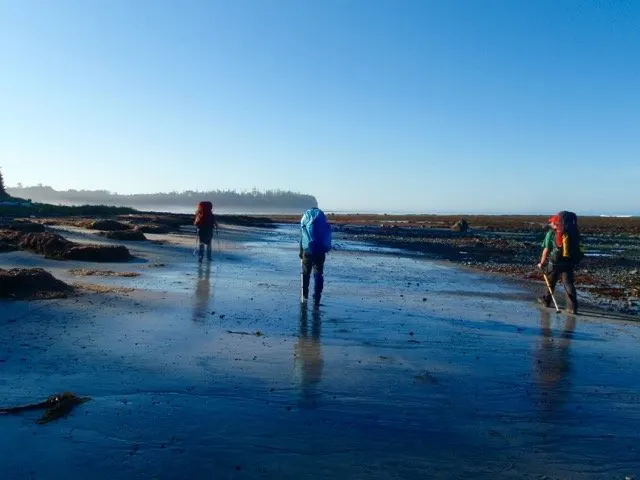

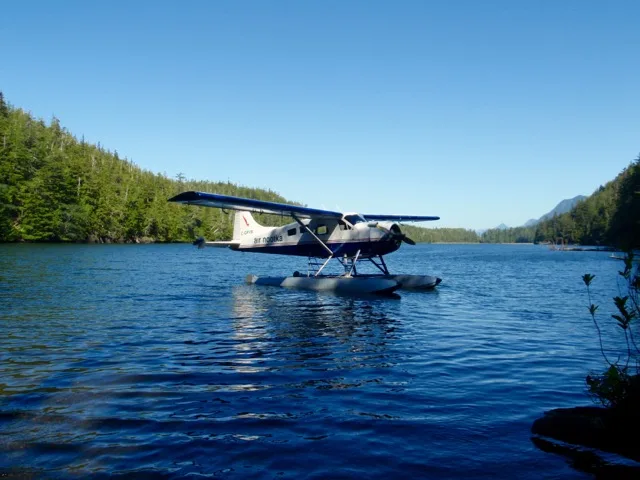
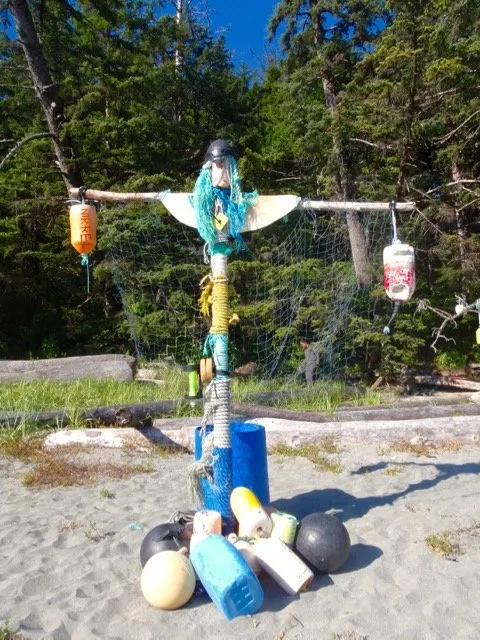
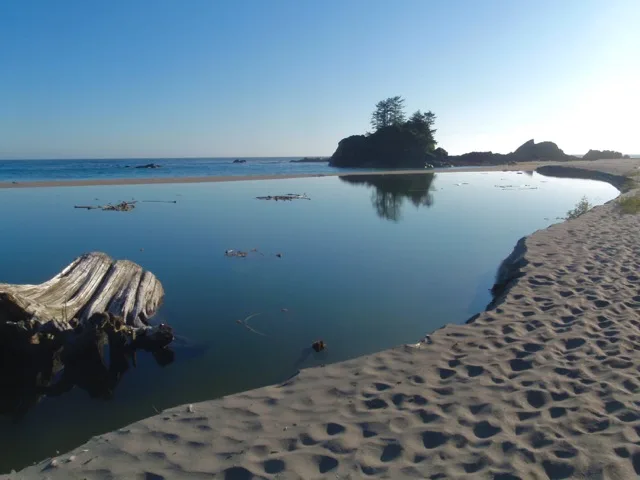
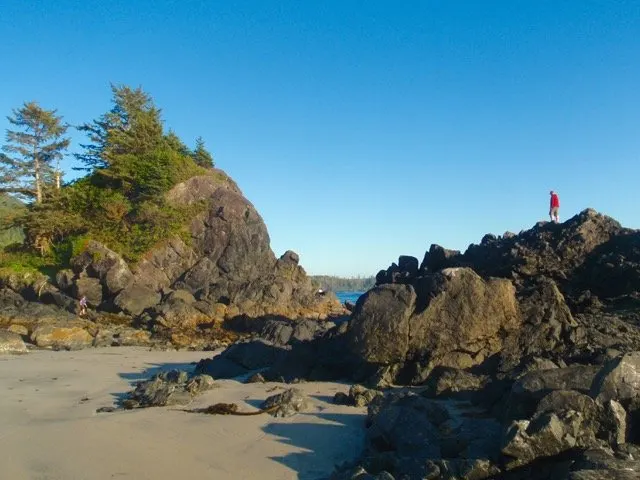
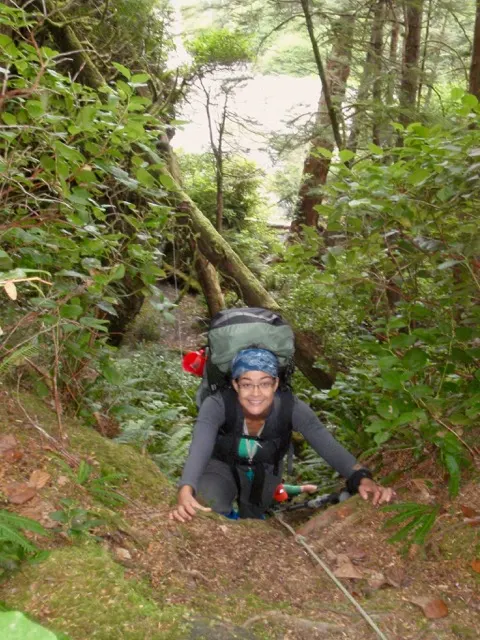
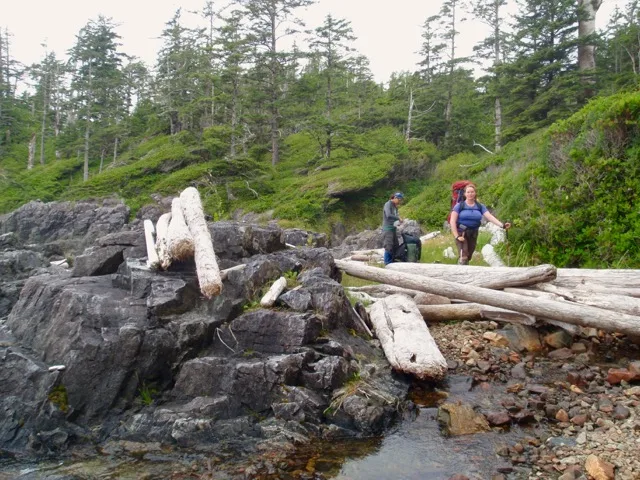
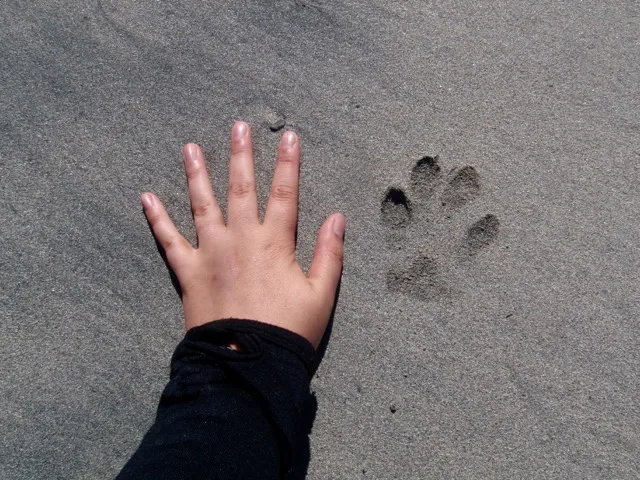
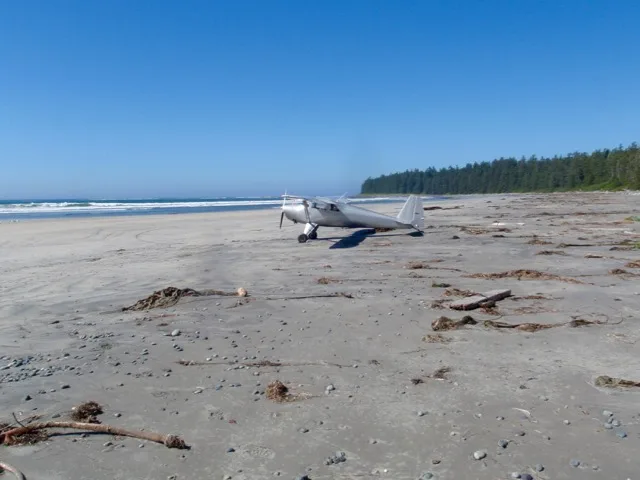
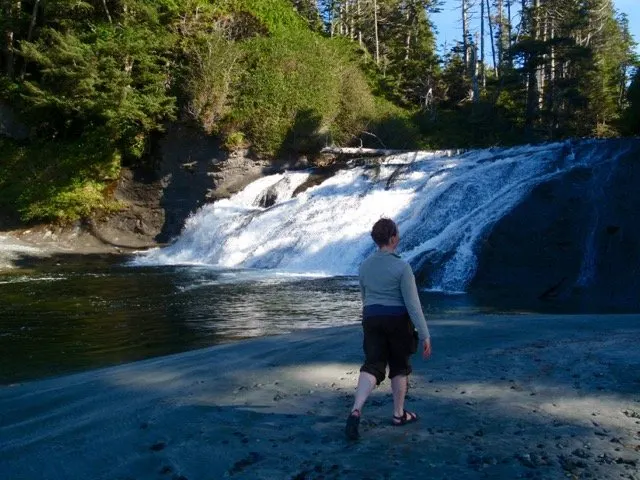
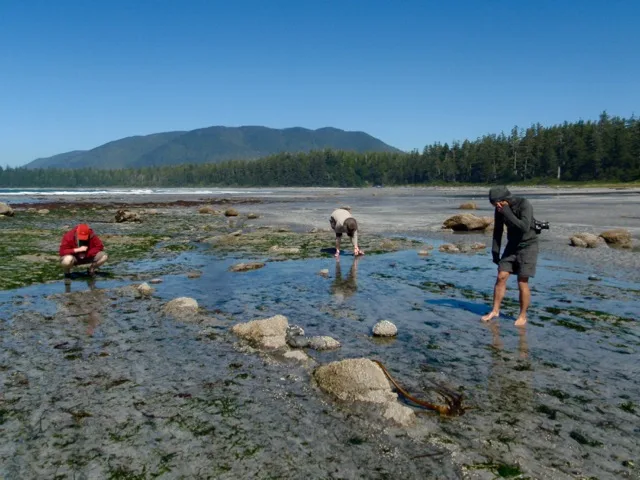
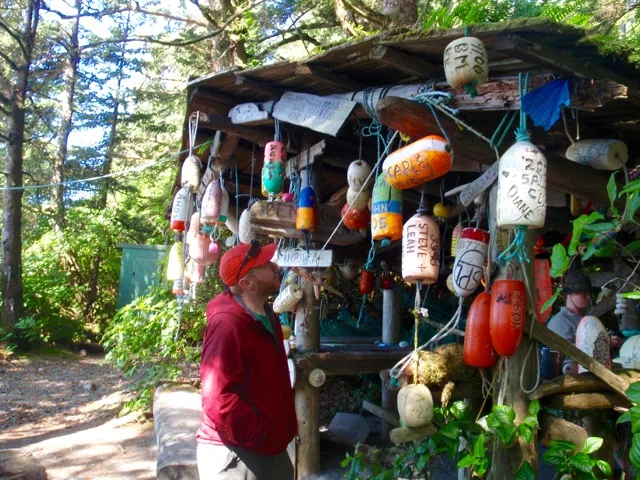
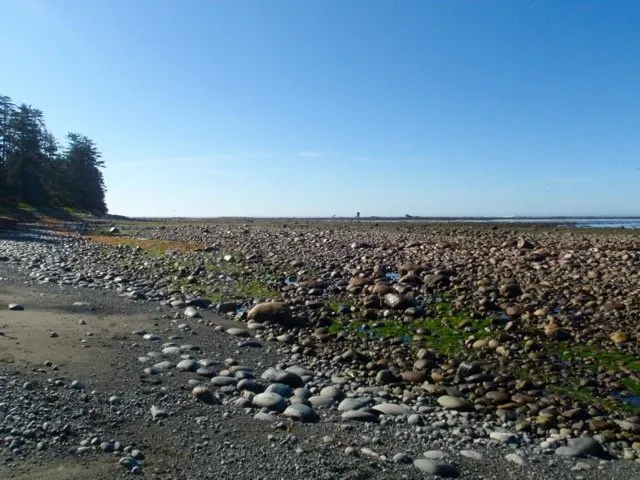
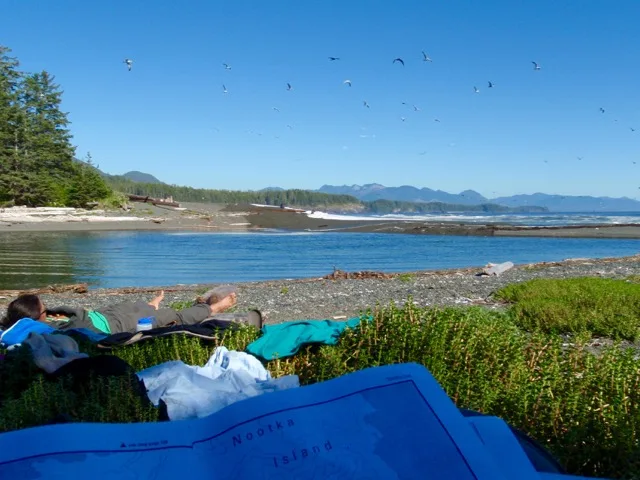
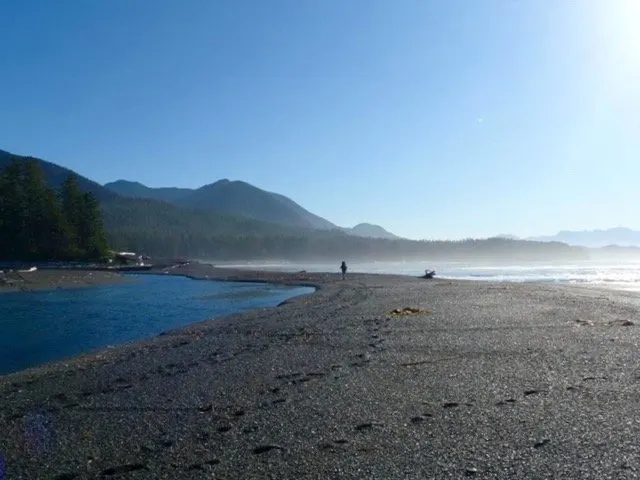
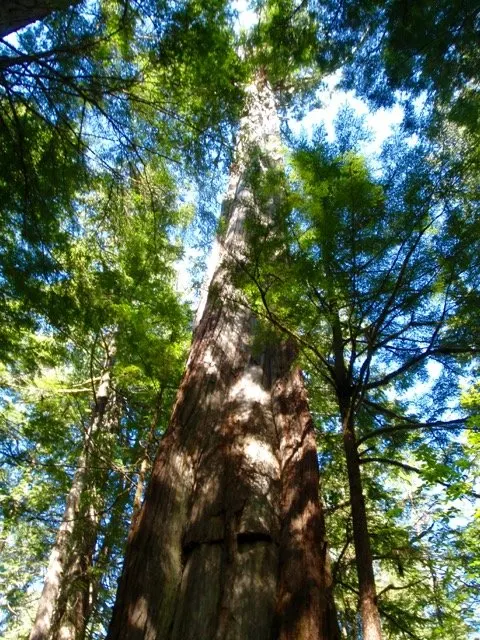
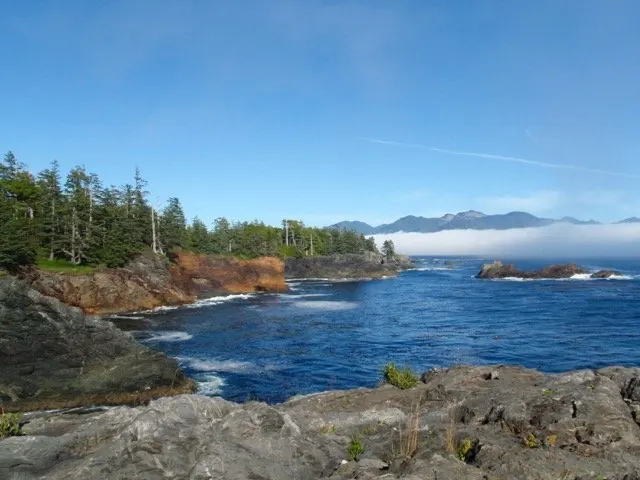
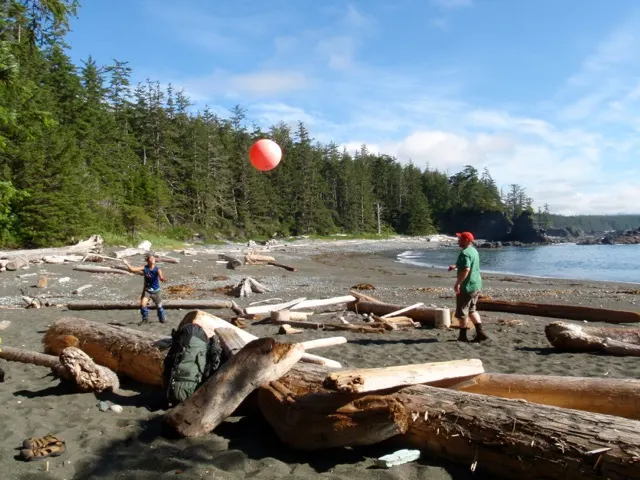
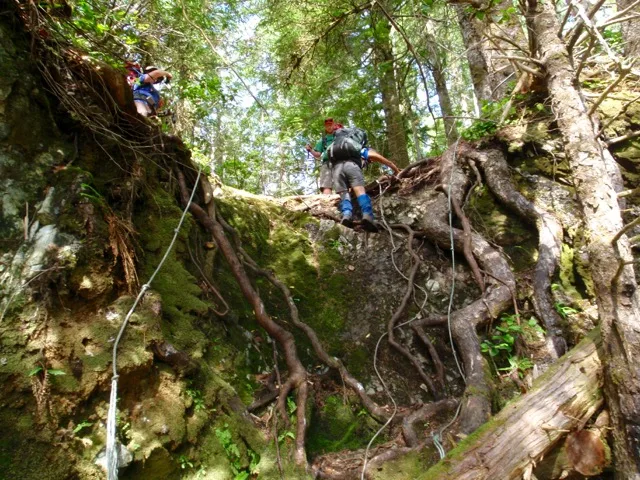
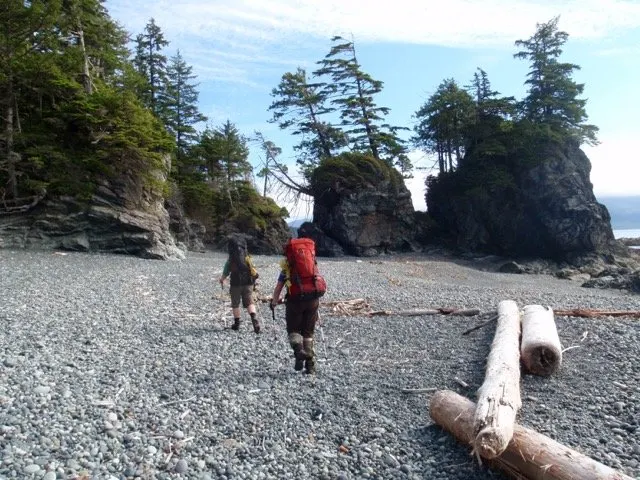
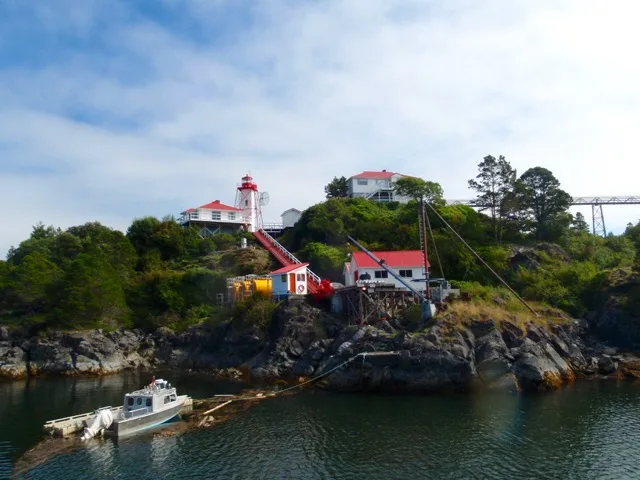
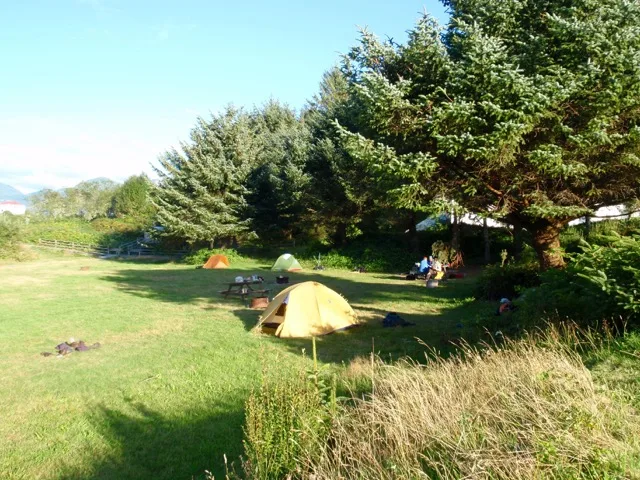
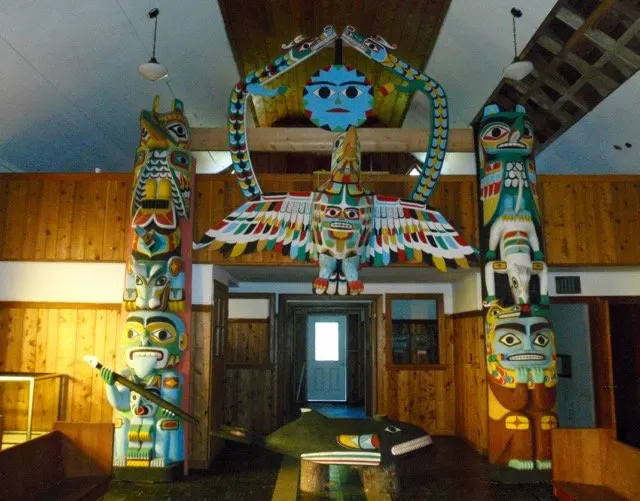
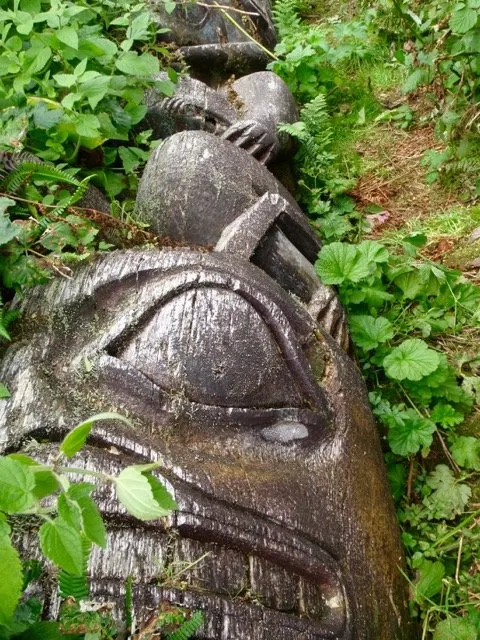
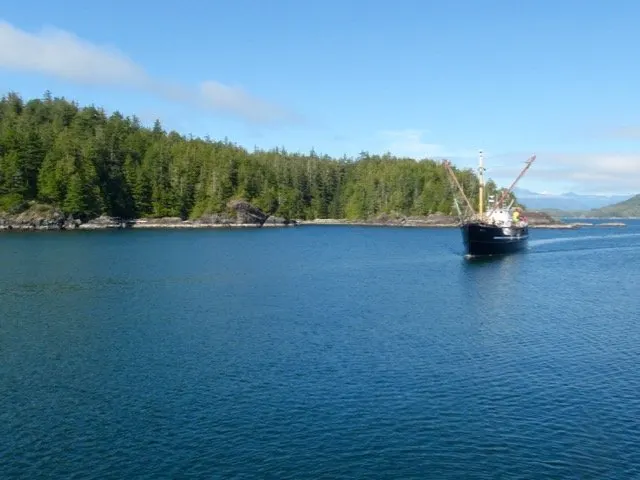
Paul Wood
Tuesday 27th of June 2023
It has changed a lot since we did it in the 80s. At that time we were among the first to hike it. I think we were the third or fourth to do so. We saw a cougar, wolves, bears, and sea sea lions. Bajo point was the site of shipwreck years ago. The ship was from San Francisco, trying to make it to Vancouver, but got caught in fog, overshot the strait of Juan de Fuca, and crashed into the reef at Bajo. Many people made it ashore and somehow survived for more than aa month in the woods. We also found lots of Japanese glass balls, including two 16 inches in diameter. In total, I've hiked Nootka three times. Love it.
Darryl
Monday 3rd of January 2022
Thanks for sharing Taryn. I came across your article while doing some research on the area for a little book. I did this hike in 2006 and sorry Martin (above) had perfect weather. Having 2 very experienced hikers definitely helped the 2 newbies (me included). Spectacular hike, but not easy even in great weather. Calvin Falls was a highlight and I think that plane must land whenever he sees people. If its the same one - he pulled out a fold-up surfboard and went for a surf just off shore.
Martin
Monday 8th of February 2021
Did this hike in 2005. It was the toughest hike I've ever done. It poured rain constantly. It was like being in the shower the whole time. We had trouble starting fires and staying dry. You definitely want to be a seasoned west coast wet hiker. My pack was getting heavier as it got wetter. All the water was tea coloured and even after filtering tasted like wet grass. I wish I would have had your weather luck.
Anna Lumiere
Monday 6th of July 2020
Hi, we have to do the trail in reverse landing on Jewett Lake, because of Covid (not allowed onto the band land). Can you tell me if going from Jewett Lake to Maquinna Point and camping there is a good idea ? I feel like camping at Beano would be so far with the heaviest packs and only getting dropped off at 10 am.
Taryn Eyton
Monday 6th of July 2020
Yes, going all the way to Beano in one day might be hard. I remember the inland section around Maquinna point taking a long time. There are some pocket coves on the east side of Maquinna Point that make good campsites - just make sure you choose one that has running water as many of them don't. Our last campsites (which would be your first) was in a cove on the east side of Maquinna Point where a small, round lake inland supplies a stream that runs to the beach. If you look on a map or google earth you'll see the spot I mean. Have fun. It's a gorgeous trail
Bronwyn
Monday 17th of September 2018
Just finished hiking the trail and found your post so so helpful! Thank you!